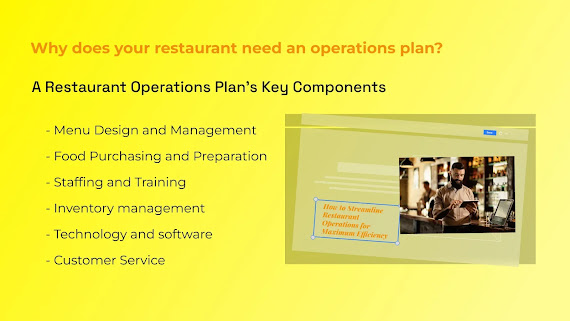The Complete Guide For Limited Service Restaurants
All restaurants can be classified into 2 broad categories
Full- Service Restaurant - They are food establishments with an extensive menu, table service and a team of waiters. They offer meals and appetizers on their premises for immediate consumption. Some full service restaurants also offer a takeout service. Today, they constitute 47% of the total commercial food service.
Limited Service Restaurant - These are food establishments where customers make order choices and pay before eating. They can consume the food and beverage on the premises, take away the packed order or also get the food delivered at their doorstep. The four categories within LSR type food establishments are:
i) Fast-Food Restaurants (Quick- Service Restaurants) - Food is served in a quick manner and items are available for as low as $1. Examples are McDonald’s, Burger King, Wendy’s, etc.
ii) Fast-Casual Restaurants - This type combines concepts from the fast-food and full-service casual dining establishments. Food orders are fulfilled quickly and food costs a little more than fast-food restaurants.
iii) Pizza Restaurants - As the name suggests, they serve varieties of pizzas and soft drinks. Examples are Domino’s Pizza, Papa John’s, etc.
iv) Cafes - Brands like Starbucks, Dunkin Brands, Tim Hortons, Krispy Kreme Doughnuts are all examples of Cafes that also fall under the category of Limited Service Restaurant.
DIFFERENCE BETWEEN FULL SERVICE AND LIMITED SERVICE RESTAURANTS
Full-Service Restaurants are also known as casual dining restaurants. For a very long time, they dominated the U.S. food industry. Also known as ‘sit-down’, they have waiters who deliver the food orders of customers at tables or booths. Such restaurants have a printed food menu.
The following are the characteristics of a Full Service Restaurant:
Guests are seated comfortably at tables
They order food from a wide variety of menu items
Customers pay for the food only after the meal
They are served throughout their stay in the restaurant
Examples are Olive Garden, Applebee’s, Buffalo Wild Wings, Chili’s, etc.
Limited Service Restaurants in the US account for more than $200 billion dollars. This is nearly half of the total restaurant industry sales. They account for almost 53% of the total commercial foodservice industry.
The following are the characteristics of a Limited Service Restaurant:
It provides partial service to customers
Guests take the initiative to place an order - They select from a menu and place the order at a counter
Money is paid in advance
Food can be consumed on-premises or taken away
Things do not transpire at a table after guests are comfortably seated
Customers prefer a Limited Service Restaurant to buy prepared-to-order food in a quick manner
Examples are In-N-Out Burger, Firehouse Subs, Chick-fil-A, Jersey Mike’s Subs, The Habit Burger Grill, etc.
Limited Service restaurants are venues that offer customers tasty meals at extremely affordable prices and unbeatable speeds in exchange for self-service.
RECENT RESEARCH DETAILS
In 2018, the limited-service restaurant enjoyed a greater share of the market (53%) while full-service restaurants occupied only 47% of the share. By 2023, the LSR segment is expected to capture nearly 60% of the total restaurant market domain due to the changing dietary preferences and expansion of product portfolios.
The various segments of the US restaurant market by-product are:
Burger
Pizza
Coffee
Sandwiches
Mexican food
Others
Read More..




Comments
Post a Comment